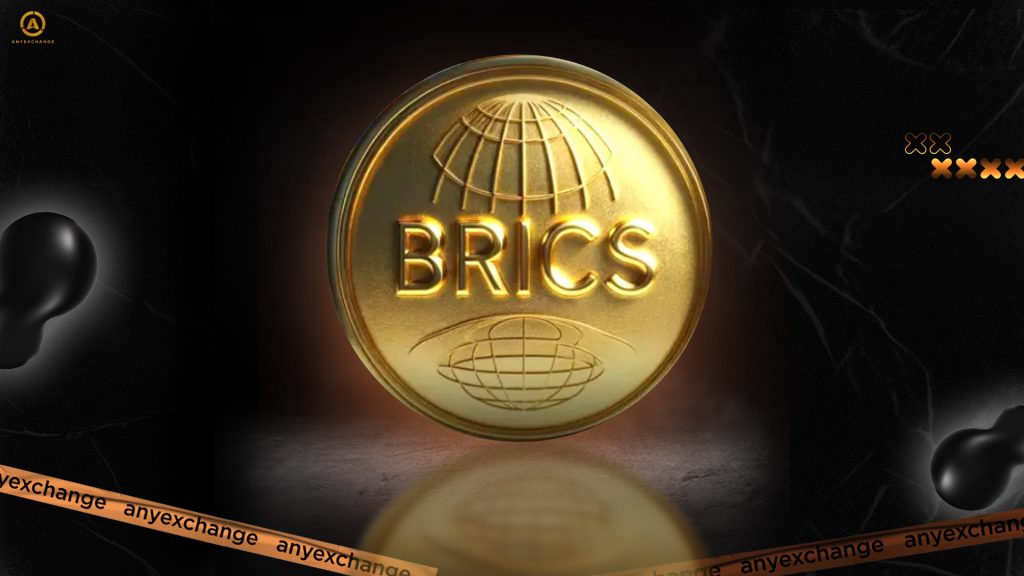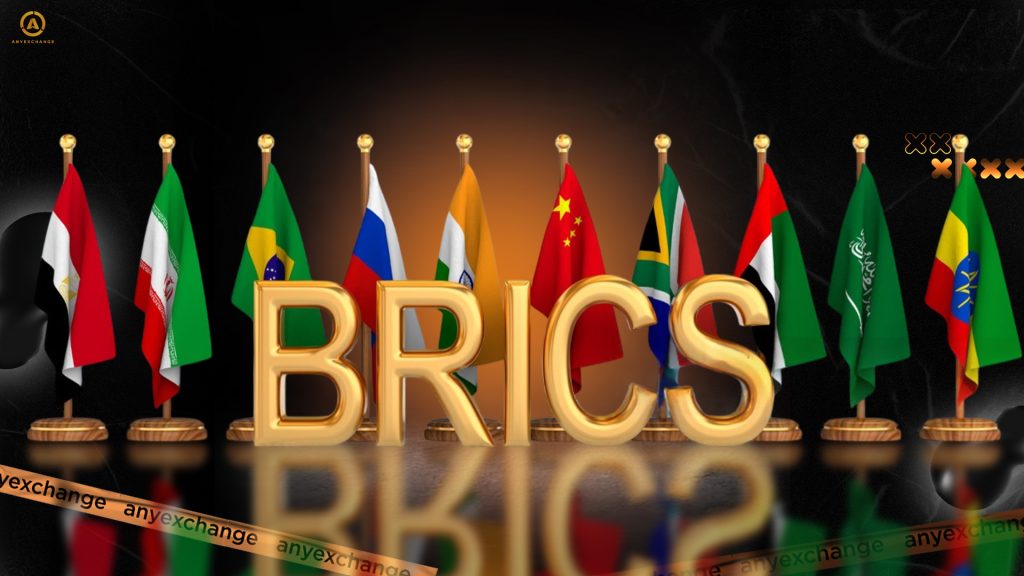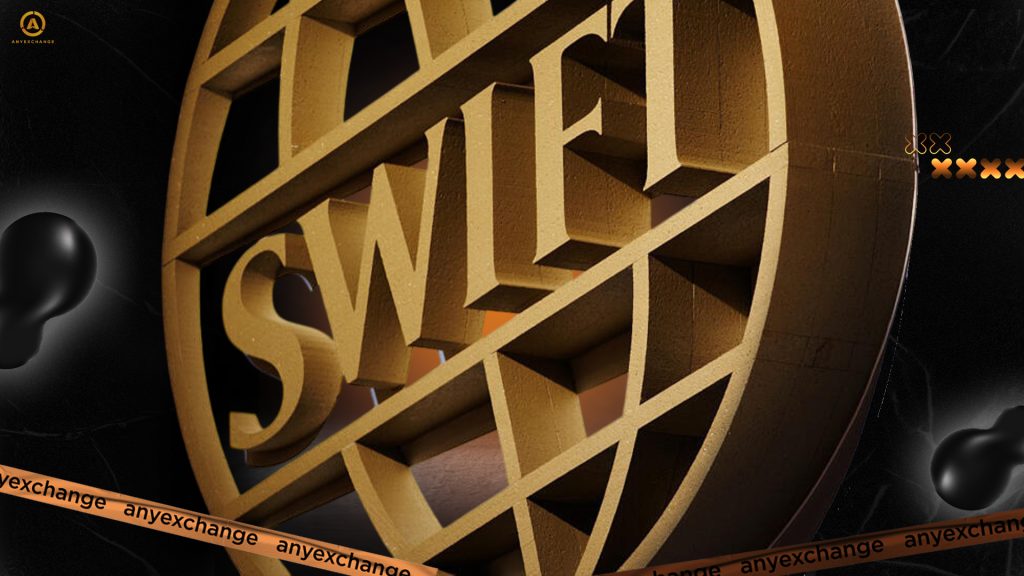
The creation of the BRICScoin cryptocurrency is a new ambitious project of the BRICS countries, which seem determined to make a name for themselves in the digital financial world. Against the backdrop of economic challenges, sanctions restrictions, and attempts to demonstrate their independence from the West, the idea of launching a digital currency of the BRICS countries seems like a logical but highly controversial step.
Are we really on the verge of creating another “financial giant” capable of displacing the dollar and the euro? Or is this yet another attempt by geopolitical players to prove their importance, which is not supported by a real economic base?
At the moment, the BRICScoin is seen as a tool that will help unite the economic efforts of the bloc’s member countries and reduce their dependence on traditional global financial institutions. However, given the heterogeneity of BRICS economic models and the different political interests of its members, this project raises more questions than it answers.
Why do the BRICS countries need their own cryptocurrency?

Before delving into the details of the goals of BRICScoin creation, it is worth understanding what BRICS is and what tasks it solves. BRICS is an economic bloc that includes Brazil, russia, India, China and South Africa, Egypt, Ethiopia, Iran, Saudi Arabia and the United Arab Emirates. The bloc was originally created to “promote cooperation among rapidly developing countries and counter Western influence. Over time, however, it became clear that the economies of the member countries were not developing so evenly, and that some members had conflicting political interests.
Nevertheless, the idea of introducing a BRICS cryptocurrency and de-dollarization is being actively promoted. The main stated goals of the project are:
- to create an alternative to the dollar in international settlements;
- to strengthen the economic sovereignty of the BRICS countries;
- to reduce the influence of Western financial systems;
- to ensure greater independence from SWIFT and other payment instruments.
But let’s analyze these goals in more detail.
Independence from the US dollar (dedollarization)

One of the main objectives of creating the BRICScoin cryptocurrency is to reduce dependence on the US dollar. The BRICS countries have long been trying to weaken the influence of the U.S. currency in their economies, but so far the dollar remains the dominant means of international settlements. The idea is that international settlements in BRICScoin will allow members of the bloc not to depend on fluctuations in the dollar exchange rate and avoid financial sanctions.
The initiators of the project state that the new cryptocurrency is not intended to completely rеplace traditional currencies, but rather to complement them, creating an alternative to dollar accounts. They emphasize that “BRICScoin will be able to be used in international trade between the countries of the bloc, reducing dependence on the volatility of major reserve currencies”. However, a reasonable question arises here: if the national currencies of these nations lack stability, why would a digital version suddenly become a panacea? Moreover, it is more than doubtful that the global business community will abandon the dollar in favor of an asset managed by an aggressor country and the Chinese Communist Party.
Enhancing economic sovereignty
Another argument in favor of the BRICS cryptocurrency and de-dollarization is the desire of the bloc’s members for greater economic independence. But is there a real economic rationale for this idea? Given that the economies of Brazil, India and South Africa are critically dependent on Western markets, it is doubtful that they will massively abandon their usual financial instruments in favor of the BRICScoin. And who will regulate this currency? China and russia again, adjusting everything to their interests?
An alternative to SWIFT and Western payment systems

russia’s disconnection from SWIFT showed how painful the effects of Western sanctions can be. And that is why the BRICS cryptocurrency is being promoted as an alternative to SWIFT as a tool to protect national economies. However, the reality is that all of the world’s leading financial institutions are still an integral part of the Western infrastructure. How viable could a parallel payment systеm be? Why would it suddenly need the support of the world’s leading players? BRICScoin is likely to remain a niche instrument for a limited number of countries, while the real economic mechanisms continue to function according to long-established rules.
Stages and mechanisms of BRICScoin creation
Concept and development
It is clear that the role of russia and China in the creation of BRICScoin is dominant. These two countries are the main initiators of the development, providing technical and regulatory support. While the rest of the countries are cautious, russia and China are pushing their agenda in an attempt to create an instrument of political and economic influence.
Technological characteristics
It is stated that blockchain technologies in BRICScoin will be based on decentralized solutions. But what level of decentralization can be expected in a project curated by China and russia? The question is rhetorical. Most likely, control over the blockchain will be concentrated in the hands of government agencies, raising questions about the transparency and reliability of the systеm. The issuance and collateralization of cryptocurrency also remains an open question. What assets will back the coin? Traditional currencies? Gold? Or will everything be reduced to the “promises” of the participating countries? Again, there are more questions than answers.
Stages of BRICScoin cryptocurrency creation
A phased implementation is planned: pilot projects, testing and gradual expansion of the circle of users. The BRICScoin ecosystem, according to the developers, should inсlude not only the digital currency itself, but also payment gateways, smart contracts, decentralized exchanges and integration with the national financial systems of the BRICS countries.
Initial testing is expected to begin within the next two years, after which a transition to limited implementation in bilateral settlements between member countries is possible. According to recent statements, a full launch of the entire ecosystem is expected in 5-7 years at the earliest. However, how successful this process will be is an open question. The history of crypto initiatives in the BRICS countries does not give reason for optimism.
Potential benefits for member countries
Simplification of international settlements
In theory, the use of the BRICS coin in international trade will reduce fees and speed up transactions.
Reduced reliance on Western financial systems
Among the economic benefits of BRICScoin is the attempt to minimize sanctions risks. But is this possible in a world where more than 80% of international payments and 90% of nations’ foreign exchange reserves are tied to the dollar, euro and other Western currencies?
Increasing investment attractiveness
In words, the BRICS coin should attract investment and promote trade. However, investors like stability, and a new experimental asset governed by authoritarian regimes does not inspire much confidence.
Challenges and risks in the creation and implementation of BRICScoin
Political challenges
Western countries and the US are unlikely to ignore such a project. The question is not “if” but “how exactly” the reaction will follow.
Technical and Economic Risks
The security of the BRICScoin cryptocurrency is a priori questionable, given the state control.
Regulatory issues
So far, BRICScoin regulatory issues remain beyond the scope of interpretation by the current legal systems. One thing is certain — it will be extremely difficult to achieve international recognition.
Reaction of the international community
The project has, of course, not gone unnoticed by the world’s leading powers and international financial organizations.
Reaction of the US and Western countries to the creation of BRICScoin
Washington has already expressed concern about the project, seeing it as another attempt to evade Western sanctions and weaken the dominance of the dollar. According to the general opinion of economists, BRICScoin is unlikely to become a serious challenge to the global financial systеm, but may create additional risks for it by increasing instability in developing economies. The U.S. may respond to the initiative by tightening control over the financial flows of the BRICS countries, which in the long run will create additional risks for the project participants and complicate work with this currency.
The European uniоn has a similar position, fearing the growth of shadow settlements between states with unstable regimes. Brussels sees the BRICScoin as a potential tool for circumventing sanctions and financing economies that do not meet EU standards of transparency and legal regulation. Senior EU officials say the introduction of such a currency could increase the financial fragmentation of the global economic systеm and create additional risks for international trade.
Reaction of international financial organizations
The International Monetary Fund and the World Bank are also skeptical about the BRICScoin initiative. IMF representatives emphasize that the creation of alternative payment systems that are not tied to global financial standards could lead to increased instability. The World Bank, on the other hand, points to the technical and legal difficulties of introducing such a currency, especially given the differences in the regulation of cryptocurrencies among BRICS member countries.
Potential competition with the dollar
One of the main questions is whether the BRICScoin can compete with the dollar.
At the moment, the US dollar remains the dominant currency in international trade and financial reserves. Economists argue that even if BRICScoin gains support within the bloc, it has no chance of becoming a full-fledged substitute for the dollar at the global level.
In addition, mistrust in the financial systems of russia and China plays a key role. Businesses do not like uncertainty and prefer to work with predictable assets, and BRICScoin is likely to remain a pocket instrument for a limited circle.
Prospects for BRICScoin on the global market
What development scenarios are possible according to experts?
- Optimistic scenario: the asset will be successfully implemented in the BRICS countries and gradually expand its influence to other developing countries.
- Realistic scenario: the new cryptocurrency becomes a niche instrument for settlements within the bloc, but is not widely recognized in the global market.
- Pessimistic scenario: the prospects of the BRICScoin cryptocurrency are close to zero, technical, political and economic difficulties make the project unviable and it remains only a declarative initiative.
Conclusion
The consequences of the introduction of BRICScoin will depend on many factors — from the technical implementation to the reaction of the global market. However, it is already clear that BRICScoin’s competition and significant impact on the dollar will remain an aspirational dream rather than a reality. Insufficient political ambitions and economic instability of the BRICS countries cast doubt on the success of this project.
For investors and the business community, BRICScoin remains an extremely risky asset, and its future largely depends on the ability of the BRICS countries to establish transparent and effective governance mechanisms. At the moment, the project looks more like an overblown political gesture than a full-fledged economic solution.
Thank you for your attention. Invest safely and profitably!
AnyExchange is an exchanger through which you can convert cryptocurrencies at the most favorable rate. The platform also offers fast money transfers worldwide.






